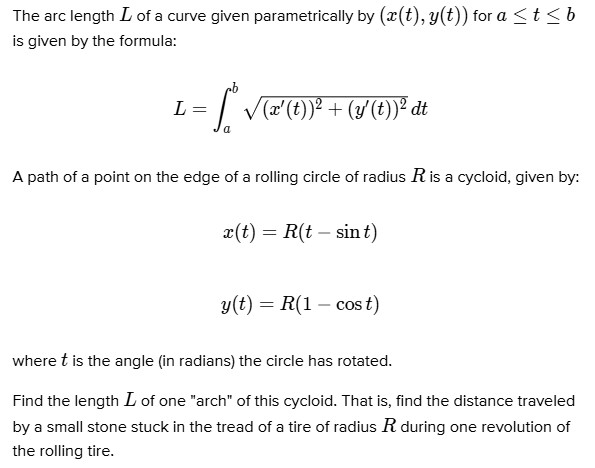QQuestionAnatomy and Physiology
QuestionAnatomy and Physiology
The arc length $L$ of a curve given parametrically by $(x(t), y(t))$ for $a \leq t \leq b$ is given by the formula:
L=\int_{a}^{b} \sqrt{\left(x^{\prime}(t)\right)^{2}+\left(y^{\prime}(t)\right)^{2}} d t
A path of a point on the edge of a rolling circle of radius $R$ is a cycloid, given by:
\begin{aligned}
& x(t)=R(t-\sin t) \\
& y(t)=R(1 -\cos t)
\end{aligned}
where $t$ is the angle (in radians) the circle has rotated.
Find the length $L$ of one "arch" of this cycloid. That is, find the distance traveled by a small stone stuck in the tread of a tire of radius $R$ during one revolution of the rolling tire.
Attachments

6 months agoReport content
Answer
Full Solution Locked
Sign in to view the complete step-by-step solution and unlock all study resources.
Step 1I'll solve this cycloid arc length problem step by step:
Step 2: Find the derivatives of x(t) and y(t)
x'(t) = R(1 - \cos t)
y'(t) = R \sin t
Final Answer
The arc length of one complete arch of a cycloid is 8 times the radius of the generating circle.
Need Help with Homework?
Stuck on a difficult problem? We've got you covered:
- Post your question or upload an image
- Get instant step-by-step solutions
- Learn from our AI and community of students